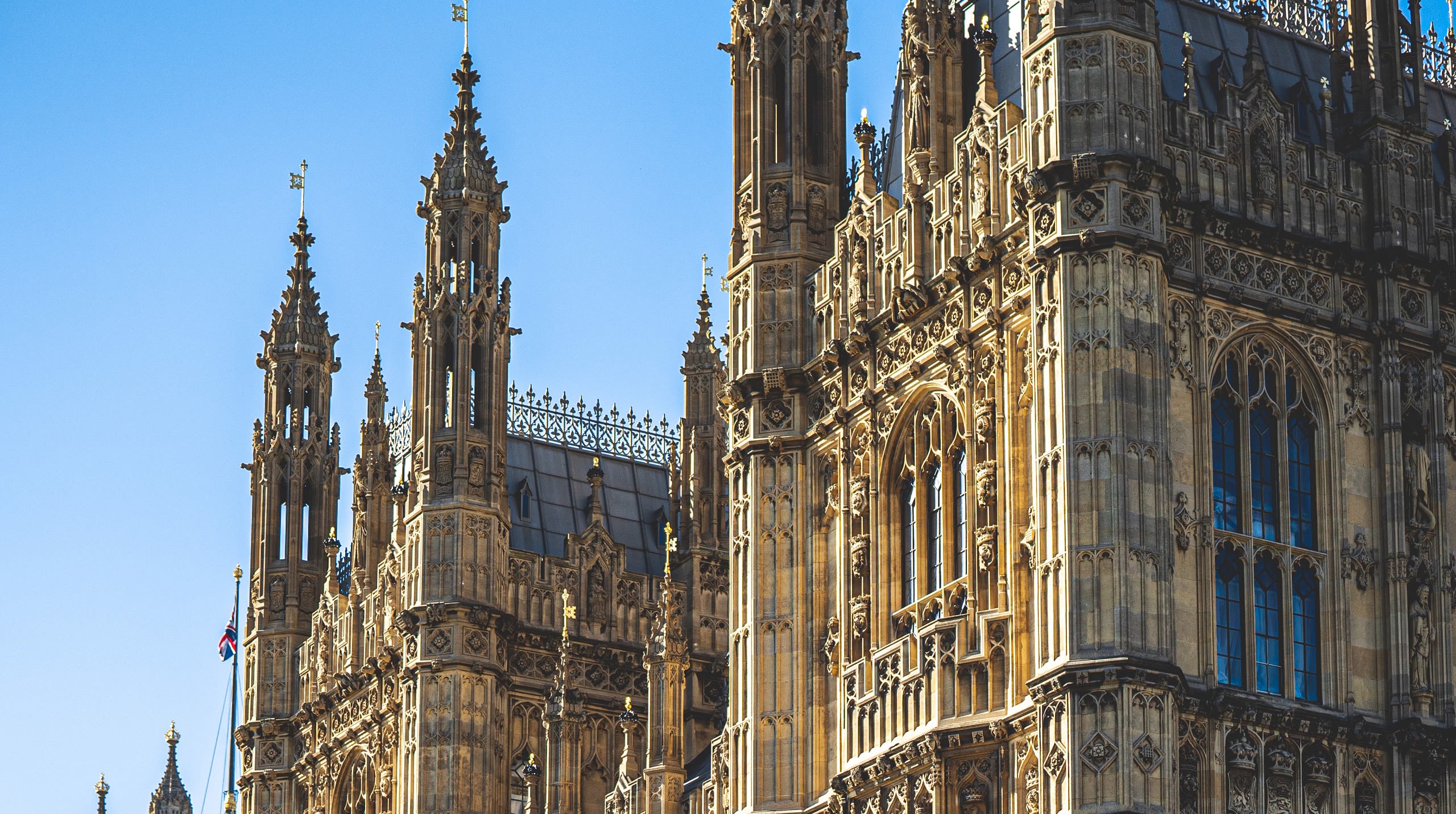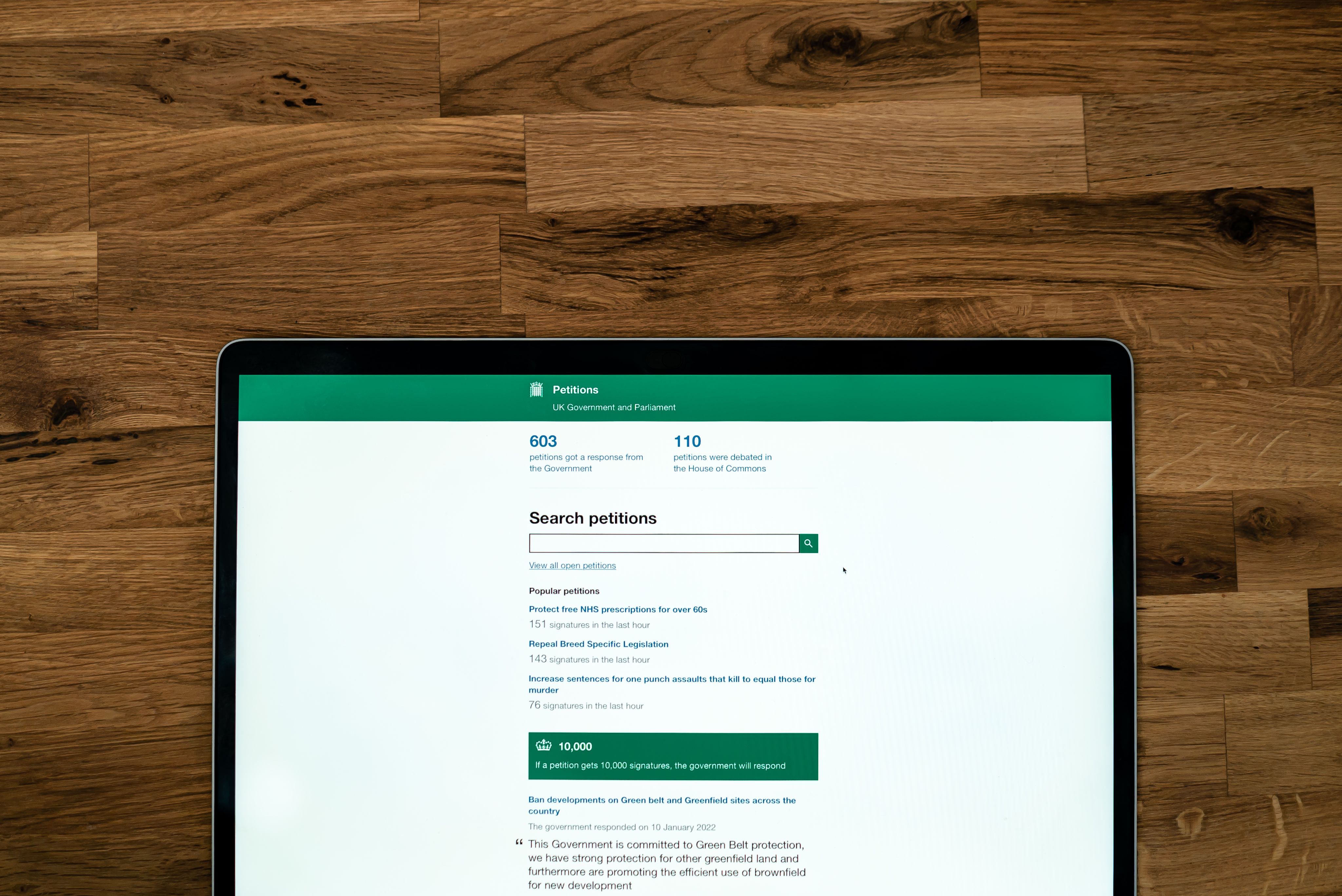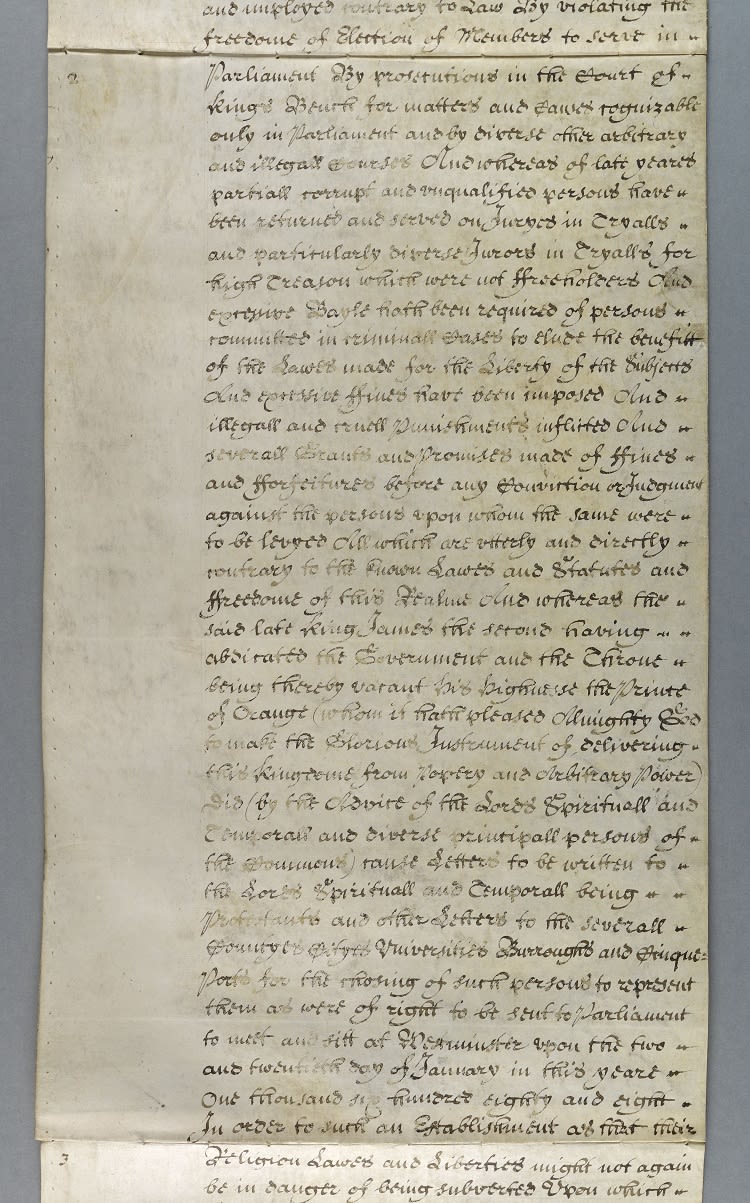The history of petitions
How petitioning has evolved

What is a petition?
A petition is a formal written request from people to an authority, such as Parliament, raising a concern or requesting some form of action.
Petitions have a long history. Historians have suggested that the first documented petitions were from enslaved workers building the pyramids in ancient Egypt who tried to petition for better working conditions.
The Bill of Rights, 1689, HL/PO/PU/1/1688/1W&Ms2n2, Parliamentary Archives
The Bill of Rights, 1689, HL/PO/PU/1/1688/1W&Ms2n2, Parliamentary Archives
The 17th Century
The rights of petitioners and the power of the House of Commons to deal with petitions were set out in two resolutions of the Commons in 1669.
The 1689 Bill of Rights also covered the right to petition the crown.
The 17th Century
The rights of petitioners and the power of the House of Commons to deal with petitions were set out in two resolutions of the Commons in 1669.
The 1689 Bill of Rights also covered the right to petition the crown.
The Bill of Rights, 1689, HL/PO/PU/1/1688/1W&Ms2n2, Parliamentary Archives
The Bill of Rights, 1689, HL/PO/PU/1/1688/1W&Ms2n2, Parliamentary Archives
The 18th Century
Over time, petitions would be used to demand radical changes to society, including campaigns for greater rights.
The abolitionist movement’s 1788 petitions collected over 100,000 signatures and helped spark parliamentary debate about ending the transatlantic slave trade.
Commons’ petition for the abolition of slavery from Broad Oak, Chiddingly, 1830, HL/PO/JO/10/8/919, Parliamentary Archives
Commons’ petition for the abolition of slavery from Broad Oak, Chiddingly, 1830, HL/PO/JO/10/8/919, Parliamentary Archives
The 18th Century
Over time, petitions would be used to demand radical changes to society, including campaigns for greater rights.
The abolitionist movement’s 1788 petitions collected over 100,000 signatures and helped spark parliamentary debate about ending the transatlantic slave trade.
Commons’ petition for the abolition of slavery from Broad Oak, Chiddingly, 1830, HL/PO/JO/10/8/919, Parliamentary Archives
Commons’ petition for the abolition of slavery from Broad Oak, Chiddingly, 1830, HL/PO/JO/10/8/919, Parliamentary Archives
The 19th Century
The 19th century saw a rise in petitions.
- Between 1837–1841, the average number of petitions presented in a year was nearly 17,600.
- A massive 34,000 petitions were presented in 1843.
An 1839 Chartist petition asked for political reforms such as the right to vote for all men and the right to vote in secret.
It gained over 1.25 million signatures.
Both the Suffragists and the Suffragettes used petitions to campaign for women’s right to vote.
A petition from the Mistresses of Dulwich High School asked for the enfranchisement of “duly qualified women” to be inserted in the Franchise Bill, which was then before Parliament.
More than 16,000 petitions were presented to the House of Commons and House of Lords asking for votes for women between 1866 and 1918.
A Petition of the Mistresses of Dulwich High School, 1884, HL/PO/6/11A, Parliamentary Archives
A Petition of the Mistresses of Dulwich High School, 1884, HL/PO/6/11A, Parliamentary Archives
The 19th Century
The 19th century saw a rise in petitions.
- In the years 1837–1841, the average number of petitions presented in a year was nearly 17,600.
- A massive 34,000 petitions were presented in 1843.
An 1839 Chartist petition asked for political reforms such as the right to vote for all men and the right to vote in secret.
It gained over 1.25 million signatures.
Both the Suffragists and the Suffragettes used petitions to campaign for women’s right to vote.
A petition from the Mistresses of Dulwich High School asked for the enfranchisement of “duly qualified women” to be inserted in the Franchise Bill, which was then before Parliament.
More than 16,000 petitions were presented to the House of Commons and House of Lords asking for votes for women between 1866 and 1918.
A Petition of the Mistresses of Dulwich High School, 1884, HL/PO/6/11A, Parliamentary Archives
A Petition of the Mistresses of Dulwich High School, 1884, HL/PO/6/11A, Parliamentary Archives
Equal Pay in the public services petition, 1953, HC/CL/JO/4/6/13, Parliamentary Archives
Equal Pay in the public services petition, 1953, HC/CL/JO/4/6/13, Parliamentary Archives
The 20th Century
The 20th century saw more petitions around the right to vote and gender equality.
In 1918, the Representation of the People Act was passed which allowed women over the age of 30 who met a property qualification to vote. It was only about two-thirds of the total population of women in the UK.
The Act also abolished property and other restrictions for men, and extended the vote to virtually all men over the age of 21. Men in the armed forces could vote from the age of 19.
It was not until the Equal Franchise Act of 1928 that women over 21 were able to vote and women finally achieved the same voting rights as men.
A 1954 petition presented to the House of Commons asked 'That the House may establish equal pay for equal work as between men and women in the public services.' It was signed by more than 80,000 people.
Following the petition, equal pay was introduced in the civil service on a phased basis between 1955 and 1961.
In the 1970s, trade unions and women’s groups submitted petitions supporting the Equal Pay Act and improved maternity rights.
The 20th Century
The 20th century saw more petitions around the right to vote and gender equality.
In 1918, the Representation of the People Act was passed which allowed women over the age of 30 who met a property qualification to vote. It was only about two-thirds of the total population of women in the UK.
The Act also abolished property and other restrictions for men, and extended the vote to virtually all men over the age of 21. Men in the armed forces could vote from the age of 19.
It was not until the Equal Franchise Act of 1928 that women over 21 were able to vote and women finally achieved the same voting rights as men.
A 1954 petition presented to the House of Commons asked 'That the House may establish equal pay for equal work as between men and women in the public services.' It was signed by more than 80,000 people.
Following the petition, equal pay was introduced in the civil service on a phased basis between 1955 and 1961.
In the 1970s, trade unions and women’s groups submitted petitions supporting the Equal Pay Act and improved maternity rights.
Equal Pay in the public services petition, 1953, HC/CL/JO/4/6/13, Parliamentary Archives
Equal Pay in the public services petition, 1953, HC/CL/JO/4/6/13, Parliamentary Archives
The 21st Century
Petitions go digital

In the 21st century, technology modernised petitions and public involvement.
In 2006, the Government launched the No. 10 e-petitions site, allowing electronic submissions. It closed in 2010.
In 2011, the Coalition Government introduced a new Government petitions site that promised debates for petitions with 100,000 signatures. In 2012 they announced that petitions with 10,000 signatures would be eligible for a written Government response.
In 2014, proposals were made to create the petitions website that is still running today. A new Petitions Committee of 11 MPs would oversee the online petitions process.
The first Petitions Committee was established on 20 July 2015 and petition.parliament.uk opened the following day.
At 10,000 signatures, e-petitions receive a written response from the government, setting out their stance on the issue. E-petitions with 100,000 signatures are considered for debate in Parliament by the Petitions Committee.
The petitions website allows British citizens and UK residents to create and sign digital petitions easily.
In the 21st century, technology modernised petitions and public involvement.
In 2006, the Government launched the No. 10 e-petitions site, allowing electronic submissions. It closed in 2010.
In 2011, the Coalition Government introduced a new Government petitions site that promised debates for petitions with 100,000 signatures. In 2012 they announced that petitions with 10,000 signatures would be eligible for a written Government response.
In 2014, proposals were made to create the petitions website that is still running today. A new Petitions Committee made up of 11 MPs would oversee the online petitions process.
The first Petitions Committee was established on 20 July 2015 and petition.parliament.uk opened the following day.
At 10,000 signatures, e-petitions receive a written response from the government, setting out their stance on the issue. E-petitions with 100,000 signatures are considered for debate in Parliament by the Petitions Committee.
The petitions website allows British citizens and UK residents to create and sign digital petitions easily.











